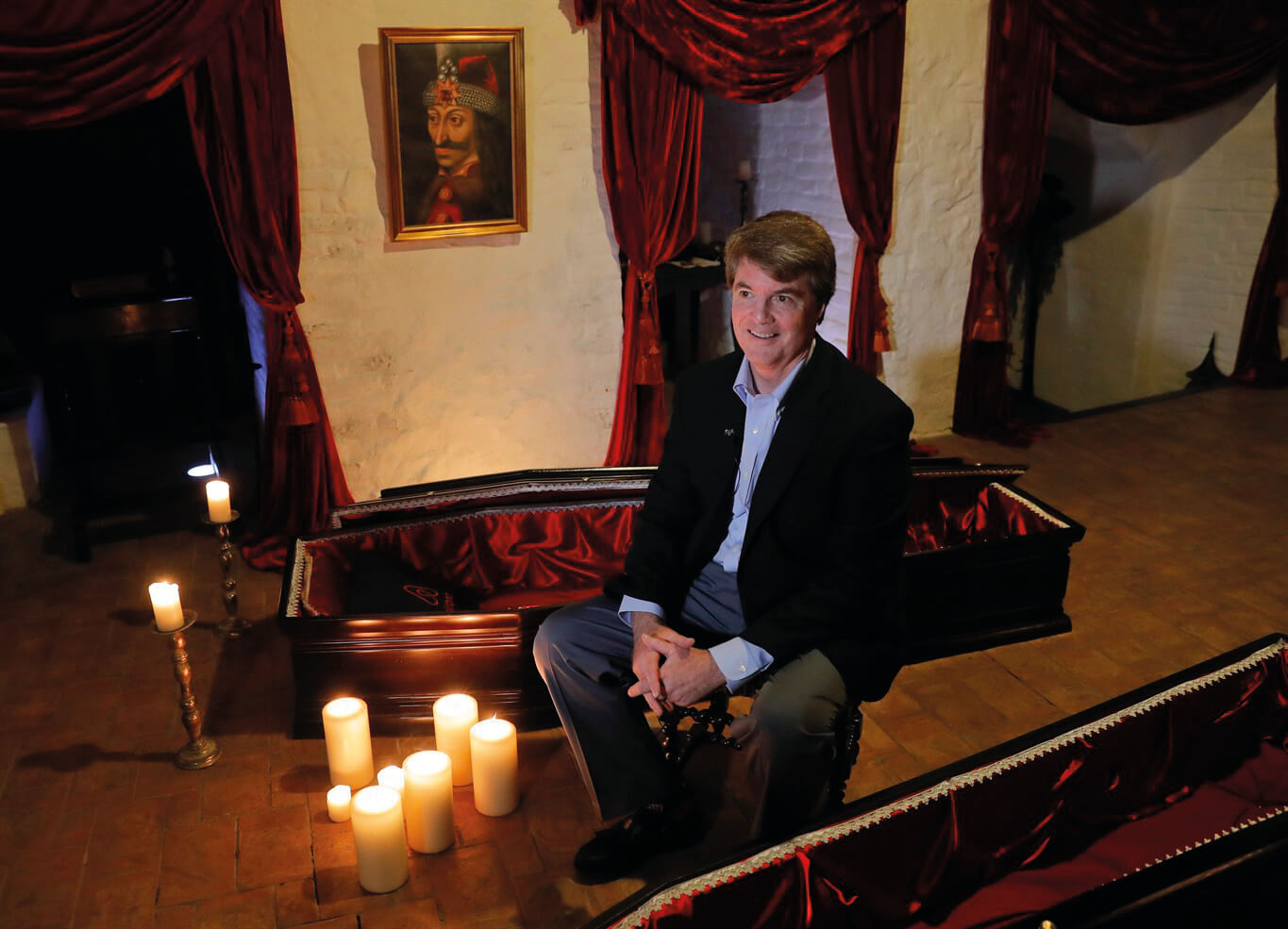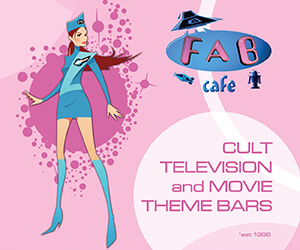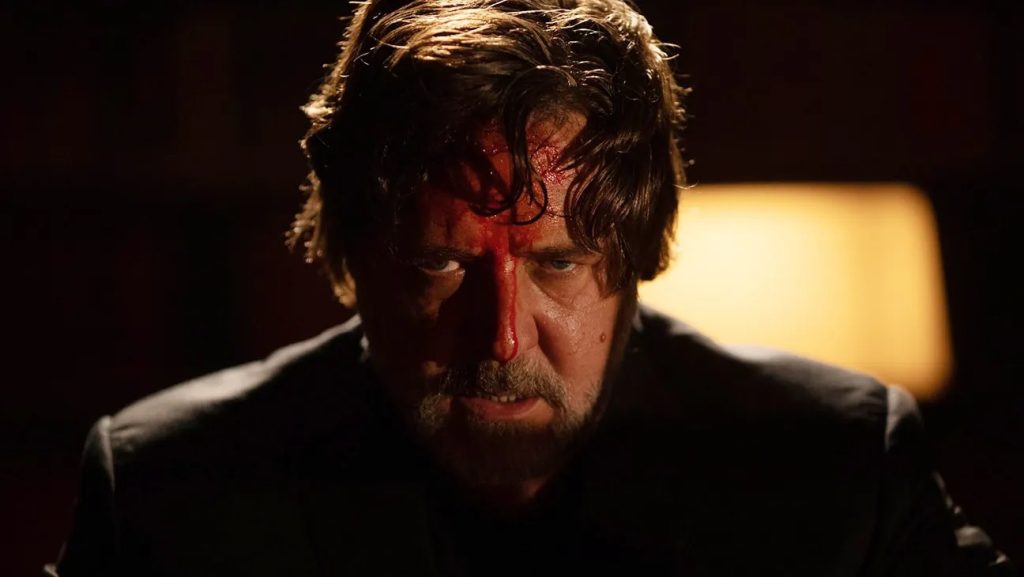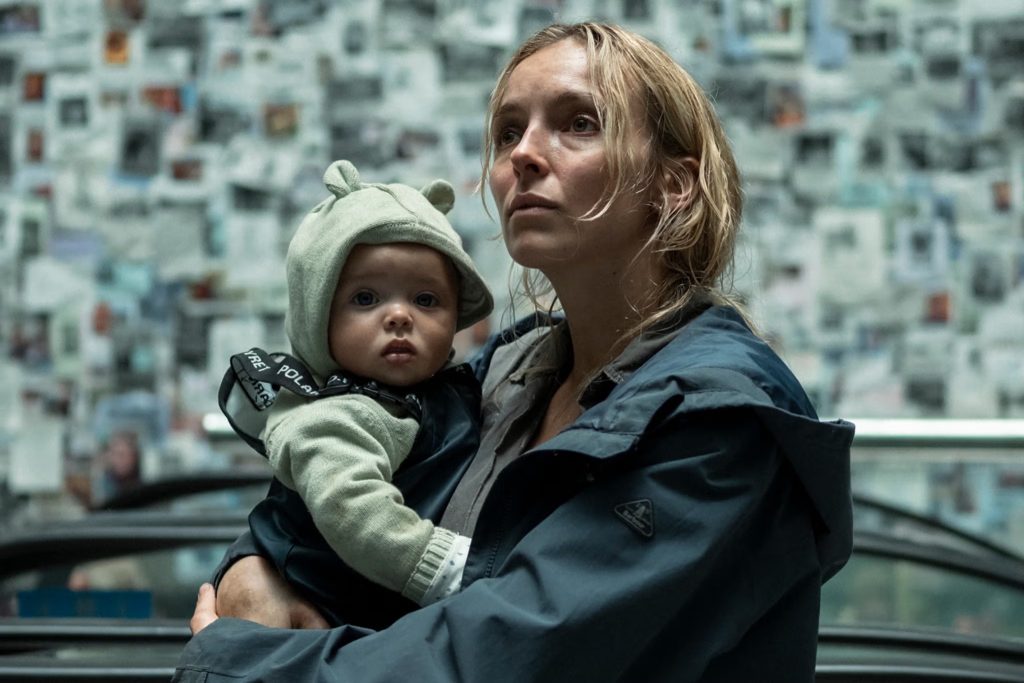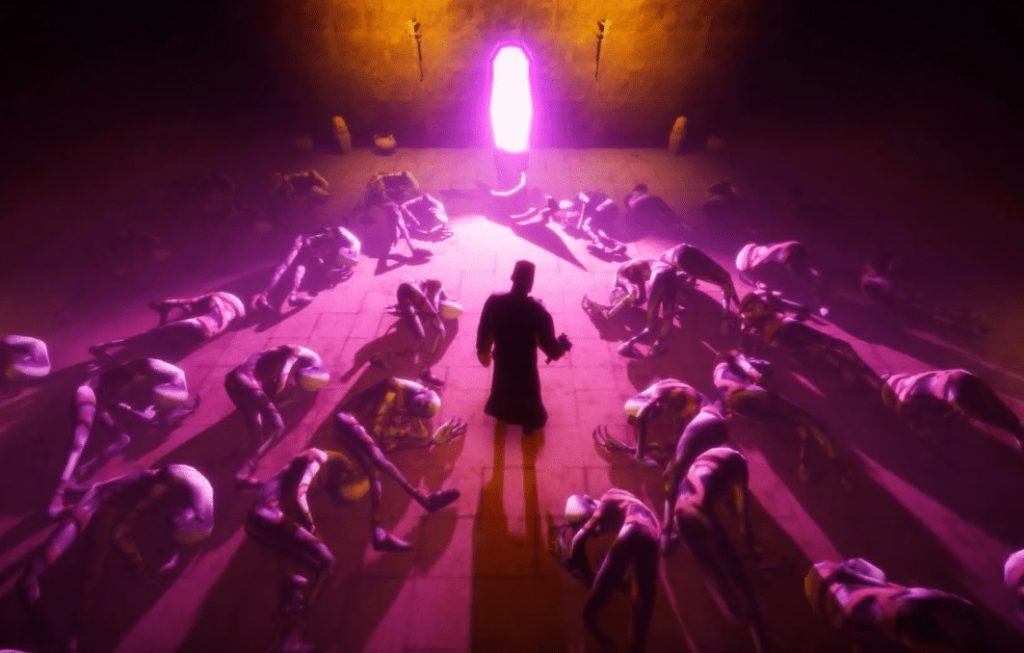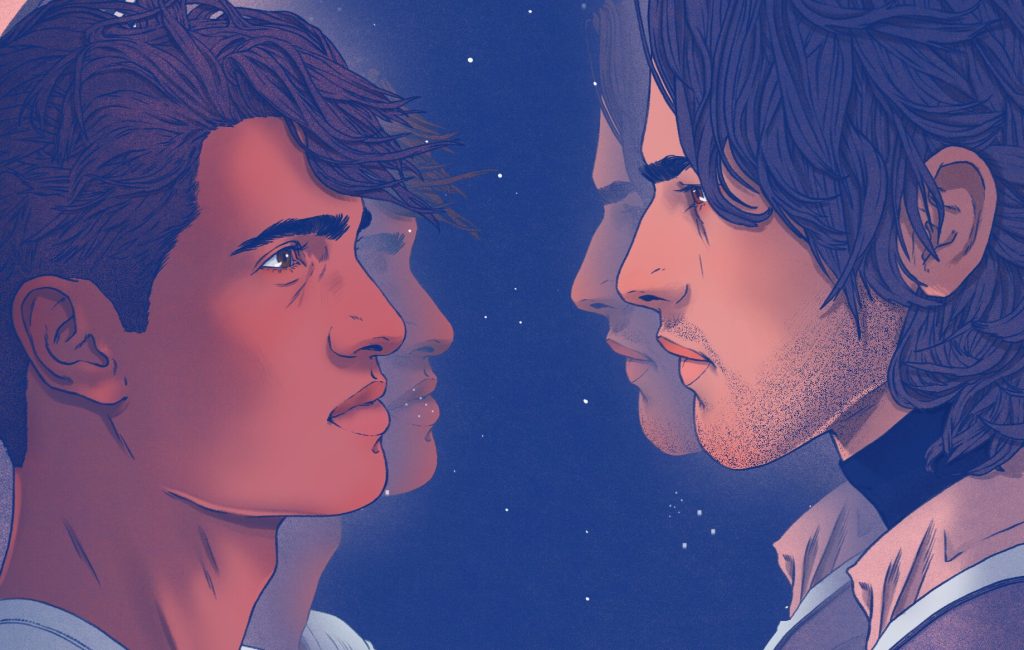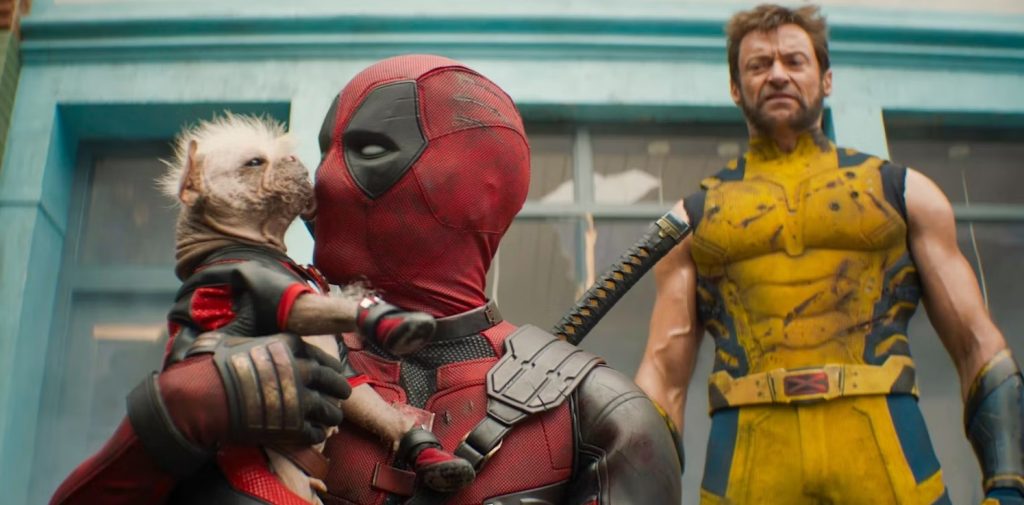Arguably the most famous horror thriller of all time is BRAM STOKER’S DRACULA. While Stoker himself passed away in 1912, his cultural legacy lives on, with his literary estate curated by his great-grandnephew, writer, historian, and lecturer DACRE STOKER. Vampires have been a never-ending fascination of humanity throughout the ages, from the Egyptian goddess Sakhmet to Vlad Tepes to Edward Cullen. We were privileged to recently check in with Dacre to talk about his work surrounding the legendary author…
STARBURST: What made you want to honour Bram Stoker’s legacy professionally?
Dacre Stoker: It started off being very simple really, I just wanted to learn more about my ancestors, in particular my great-grandfather, Dr. George Stoker, Bram’s youngest brother. The more I dug into my family’s interesting past, the more I found about the close relationship between Bram and George. I found correspondence between the two, which, in turn, led to more interesting finds about both of them. As a teacher and an athletics coach, I have always been very interested in what makes a person ‘tick’. I was obviously aware of Bram’s writing and the worldwide interest in his novel Dracula. I have become fascinated in both what kind of a person he was and what led him to write such an incredible novel.
You have written both an official sequel and an official prequel to Dracula. Do you try to emulate Bram Stoker’s style, or do you strike for something different?
My goal is to simply contribute to my great-granduncle’s legacy through my writing, both fictional and non-fiction, and through giving lectures to interested audiences. Many people around the world are familiar with the Dracula story, but I have found that there are far less who are familiar with its author, his life, and his research and writing of his best-known novel. In writing Dracul with J.D. Barker, we decided to write in the epistolary style, like Bram did when developing the novel. It was challenging for us, but we realised that many fans of Dracula appreciated our efforts.
You give numerous tours of the Romania of Vlad Tepes. Do you have a favourite site, or some lesser known tips?
I have led tours for the past five years to locations in Romania associated with both the real Vlad Dracula III, and to sites associated with Bram’s fictional Count Dracula. While the castles, palaces, and fortresses are interesting, my favourite location is the Saxon village of Viscri with its beautifully restored fortified church dating back to 1100. Although there is no proof that Vlad the Impaler visited Viscri, and there is no action in the novel Dracula set in this quaint little village, Viscri epitomises the romance of rural Transylvania and allows one’s imagination to bring you back to earlier times of Vlad Dracula. I have recently started to visit and have plans to lead tours to Cruden Bay; this is the quaint village in northern Scotland where Bram spent at least thirteen of his summer holidays. Local researcher and author Mike Shepherd has found evidence of the different houses and the hotel where Bram and his family stayed over the years. Mike, in his book When Brave Men Shudder, has pointed out that Bram wrote parts of Dracula here as well as two other novels actually set in this area. I am convinced that Slains Castle, a ruin on the outskirts of town, provided Bram with an interior layout that he needed for describing Castle Dracula. You see, Slains contains a unique octagonal room precisely like the one Bram describes in Chapter 2.
There is endless rich history behind both Vlad Tepes and the mythology of vampires. You tend to do a lot of history-based work in addition to your literary work. Are there any specific tales or peculiar historic facts that you would like to share?
I continue to be fascinated with analysing the myth of the vampire in many different cultures. Many of them seem to stem from the lack of understanding of biological decomposition, as well as that of germ theory and the contagious aspects of diseases like cholera, plague, and tuberculosis. I am always looking for any ‘strange but true’ reports or accounts in old newspapers. When I do research for a story, in this age where many newspapers are digitised, it is fairly easy to find real accounts of events happening during the period that my story is taking place, thus I can insert these events to make the story seem more believable.
Your great-granduncle was heavily involved in the theatre scene. So much so that writing novels seems almost an afterthought of his. What do you believe that the performing arts have to teach us about culture, literature, and the arts in general?
Bram’s writing was a sideline to his primary career as Manager of the Lyceum Theatre in London for twenty-seven years. It appears that he was only able to find the time to research and write his stories and novels when he was on holiday. I can imagine he probably also found the time to write when he was crossing the Atlantic at least sixteen times to travel back and forth to America with the Lyceum actors. Bram was a lover of the Arts; as a college student, he wrote theatrical reviews in a Dublin newspaper, this is what led him to a meeting with Henry Irving, the actor, and the dream job offer to move to London to Manage the Lyceum Theatre. Bram won a prize from the Royal Hibernian Society as a young boy for drawing, and later he became a founding member of the Dublin Painting and Sketching Club. Bram gravitated towards the freedom of expression found in the fantasy world of theatre and at the same time that same trade teaches the discipline associated with portrayal of plays, memorising scripts, attention to dialects, accuracy of costumes and set designs.
The world of vampires has grown significantly since Bram wrote his book. There are endless games, books, movies, TV shows, and everything else. With this, we have seen a seemingly infinite number of changes to vampire lore. Vampires in Twilight, for example, are vastly different than Dracula, but both have legions of dedicated followers. What is your opinion on the wide variation in depictions of vampires up to this point?
Obviously, vampires in literature have changed a lot since Bram Stoker introduced Count Dracula back in 1897. Bram’s Count was a very dark figure, very animalistic in nature; it needed a complete makeover when he hit the stage as Bela Lugosi in the early 1920s. Slowly, over the years, the name stayed the same, but Count Dracula became more human-like and sexier in his demeanor. Over the course of the next fifty years, creative writers such as Richard Matheson, Anne Rice, Stephen King, Charlaine Harris, Kim Newman, and Chelsea Quinn Yarborough, just to name a few, each adapted their vampires to become unique and possess more human-like qualities. What started as a revenant-like creature from the grave slowly morphed into eastern European debonair aristocrats, before the undead more recently started appearing like the boy or girl next door. Personally, I think it is wonderful that so many authors have been inspired by Bram’s novel and I recognise that variation and originality is necessary to keep the readers coming back for more.
Can you tell us about your keynote presentation, Stoker on Stoker?
I’ve been doing Stoker on Stoker: The Mysteries Behind the Writing of Dracula for the past five years. My talks provide an audiovisual glimpse behind the scenes of the life and the writing of one of the least known authors of one of the world’s most famous books. I weave together details of Dracula’s history with Stoker family lore, and Bram Stoker’s life in Dublin and London. I’ve been fortunate to obtain seldom-seen historic images associated with Bram’s research and writing process. Recently, I have added some of the background research and images of locations in the novel Dracul, co-authored with J.D. Barker.
Bram was, among many other things, an Irishman working in London at a time when there was often contempt towards the Irish. Vampires have, continuously, been depicted as the ultimate outsiders. What do you think that vampires can teach us about acceptance and diversity?
Being more accepting of vampires is not a good example of building tolerance for others who are different from us or are from different cultures. A vampire is a supernatural creature who simply wants to take your life; therefore, it would make good sense to protect yourself and keep your distance. On a more serious note, Bram did experience what is what like to be an outsider from Dublin, Ireland, living and working in London, England for twenty-seven years. I believe that Bram was also very aware of the tensions and confrontations associated with religious differences between Protestants and Catholics growing up in Ireland.
On a related note, there are endless disabled creators looking to get into the professional scene. Disabled actors, writers, set designers, puppeteers, you name it! As a veteran creator, what is your advice for those with disabilities looking to get a leg-up in the creative world?
Bram dealt with some version of a disability himself for the first seven years of his life. It is not known exactly what led to his sickly childhood and to what degree he was affected, but he did recover to become a champion athlete at Trinity College in Dublin. Nowadays, as a result of increased awareness and appropriate laws, many parts of the world have become more accommodating for people with disabilities. My advice is to not hold back, apply yourself, become highly skilled and qualified for your desired roles and do not let your disability become a factor.
Hardcover and paperback copies of DRACULA THE UN-DEAD, DRACUL, and BRAM STOKER’S LOST JOURNAL are available to buy at BRAMSTOKERESTATE.COM, alongside some fun merch such as Bram Stoker Bobblehead figures and the new Vintage Dracula Book Cover necktie. For information about STOKER ON STOKER presentations and tours that Dacre leads to Transylvania, Dublin, Ireland, Whitby, Scotland, and other sites associated with the research and writing of Dracula, visit DACRESTOKER.COM
This interview was originally published in STARBURST issue 475.

